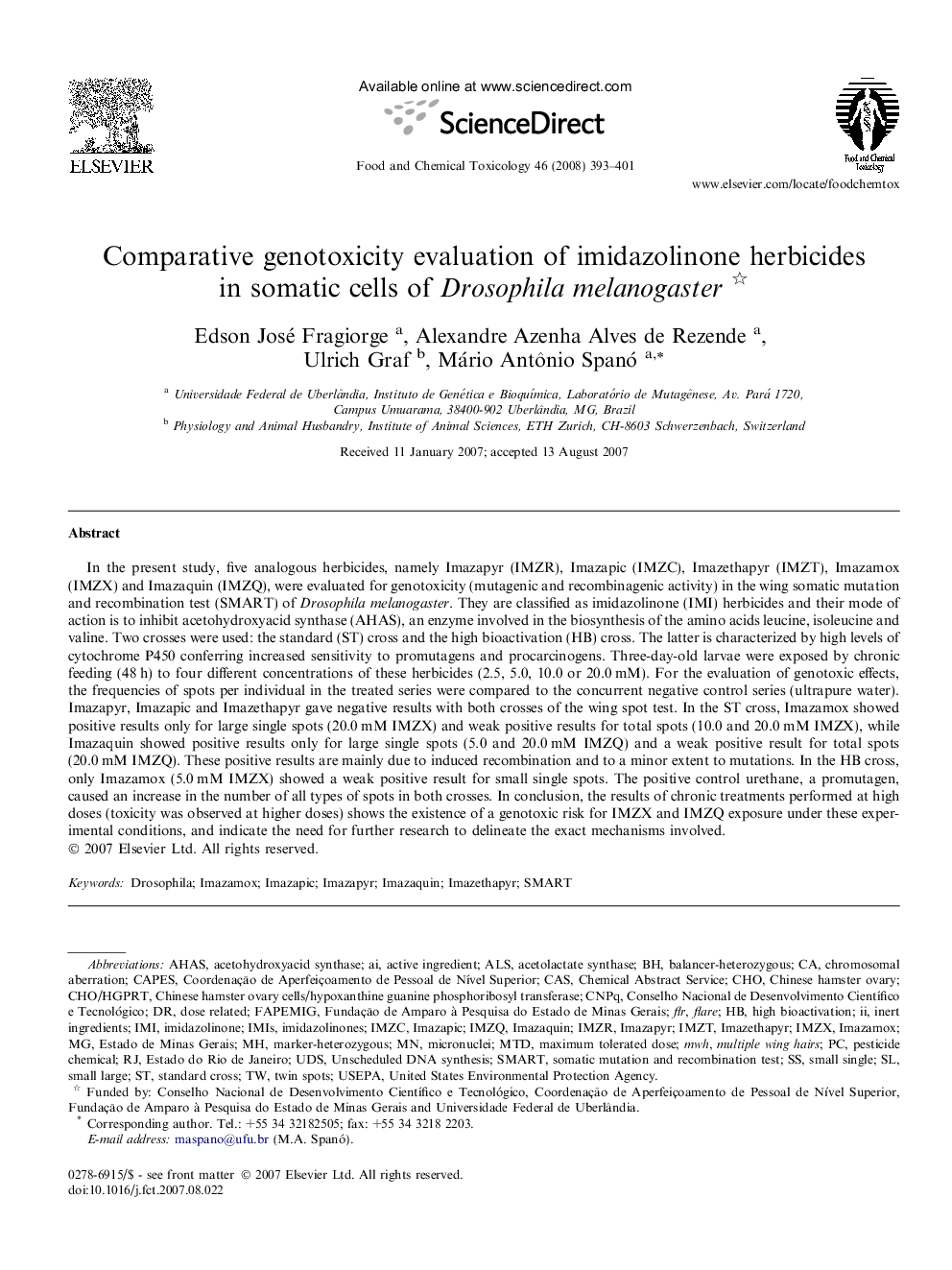| کد مقاله | کد نشریه | سال انتشار | مقاله انگلیسی | نسخه تمام متن |
|---|---|---|---|---|
| 2586744 | 1130909 | 2008 | 9 صفحه PDF | دانلود رایگان |

In the present study, five analogous herbicides, namely Imazapyr (IMZR), Imazapic (IMZC), Imazethapyr (IMZT), Imazamox (IMZX) and Imazaquin (IMZQ), were evaluated for genotoxicity (mutagenic and recombinagenic activity) in the wing somatic mutation and recombination test (SMART) of Drosophila melanogaster. They are classified as imidazolinone (IMI) herbicides and their mode of action is to inhibit acetohydroxyacid synthase (AHAS), an enzyme involved in the biosynthesis of the amino acids leucine, isoleucine and valine. Two crosses were used: the standard (ST) cross and the high bioactivation (HB) cross. The latter is characterized by high levels of cytochrome P450 conferring increased sensitivity to promutagens and procarcinogens. Three-day-old larvae were exposed by chronic feeding (48 h) to four different concentrations of these herbicides (2.5, 5.0, 10.0 or 20.0 mM). For the evaluation of genotoxic effects, the frequencies of spots per individual in the treated series were compared to the concurrent negative control series (ultrapure water). Imazapyr, Imazapic and Imazethapyr gave negative results with both crosses of the wing spot test. In the ST cross, Imazamox showed positive results only for large single spots (20.0 mM IMZX) and weak positive results for total spots (10.0 and 20.0 mM IMZX), while Imazaquin showed positive results only for large single spots (5.0 and 20.0 mM IMZQ) and a weak positive result for total spots (20.0 mM IMZQ). These positive results are mainly due to induced recombination and to a minor extent to mutations. In the HB cross, only Imazamox (5.0 mM IMZX) showed a weak positive result for small single spots. The positive control urethane, a promutagen, caused an increase in the number of all types of spots in both crosses. In conclusion, the results of chronic treatments performed at high doses (toxicity was observed at higher doses) shows the existence of a genotoxic risk for IMZX and IMZQ exposure under these experimental conditions, and indicate the need for further research to delineate the exact mechanisms involved.
Journal: Food and Chemical Toxicology - Volume 46, Issue 1, January 2008, Pages 393–401